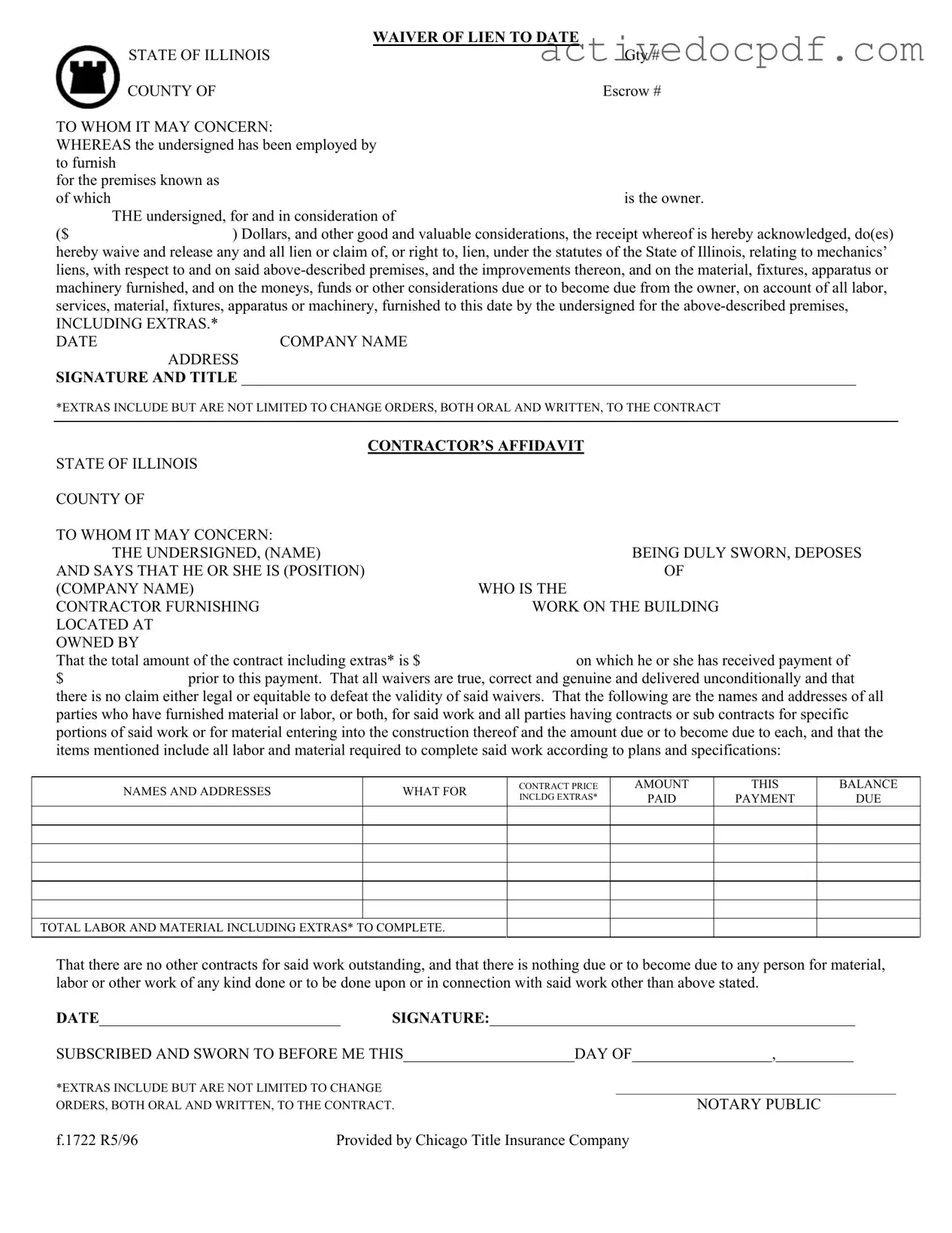The Chicago Title Waiver Format form serves to release any claims or liens that a contractor or subcontractor may have against a property. By signing this document, the undersigned acknowledges receipt of payment and waives their right to file a mechanics' lien on the property for the work completed up to that date. This helps ensure that the property owner is protected from future claims related to unpaid work.
This form is typically completed by contractors or subcontractors who have provided labor, materials, or services for a construction project. It is important for those who wish to formally waive their lien rights on a property where they have worked. The property owner or the general contractor may also require this form to confirm that all parties involved have been paid appropriately.
The form requires several key pieces of information, including:
-
The name of the company providing the waiver.
-
The property address where the work was performed.
-
The total amount of the contract, including any extras.
-
A detailed list of all parties who have provided labor or materials, along with the amounts due to each.
-
The signature and title of the individual completing the form.
This information is crucial for the validity of the waiver and to ensure that all parties involved are accounted for.
"Extras" refer to any additional work or materials that were not part of the original contract but were agreed upon later. This can include change orders, which may be either oral or written. It is essential to document these extras on the form to provide a complete picture of the financial obligations related to the project.
By obtaining a signed waiver, property owners can protect themselves from potential liens that contractors or subcontractors might file if they claim they have not been paid. This form acts as a safeguard, confirming that all parties have been compensated for their work up to the specified date, thus reducing the risk of legal disputes over unpaid bills.
If the form is not completed accurately, it may lead to complications. An incorrectly filled out waiver may not effectively release lien rights, leaving the property owner vulnerable to claims. Additionally, incomplete information about payments or parties involved could result in disputes later on. It is crucial to review the form carefully and ensure all required details are included before submission.
Yes, notarization is typically required for the Chicago Title Waiver Format form. The signature of the individual completing the form must be witnessed by a notary public to validate the document. This step adds an extra layer of authenticity and ensures that the waiver is legally binding.
